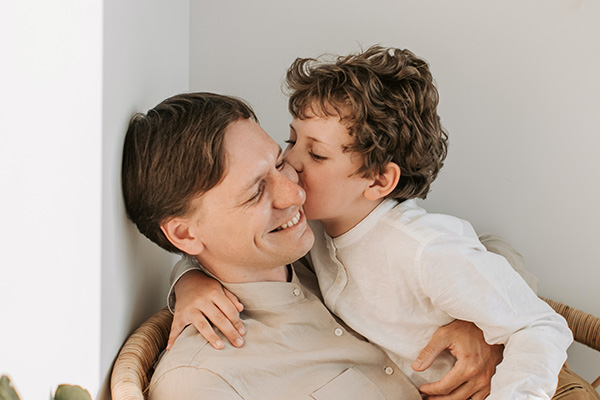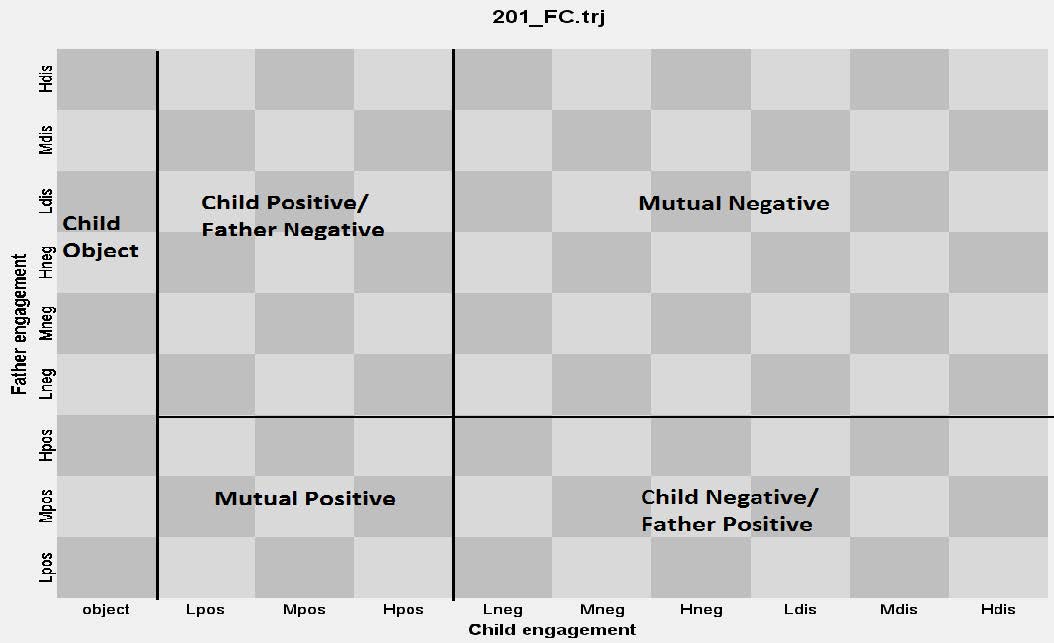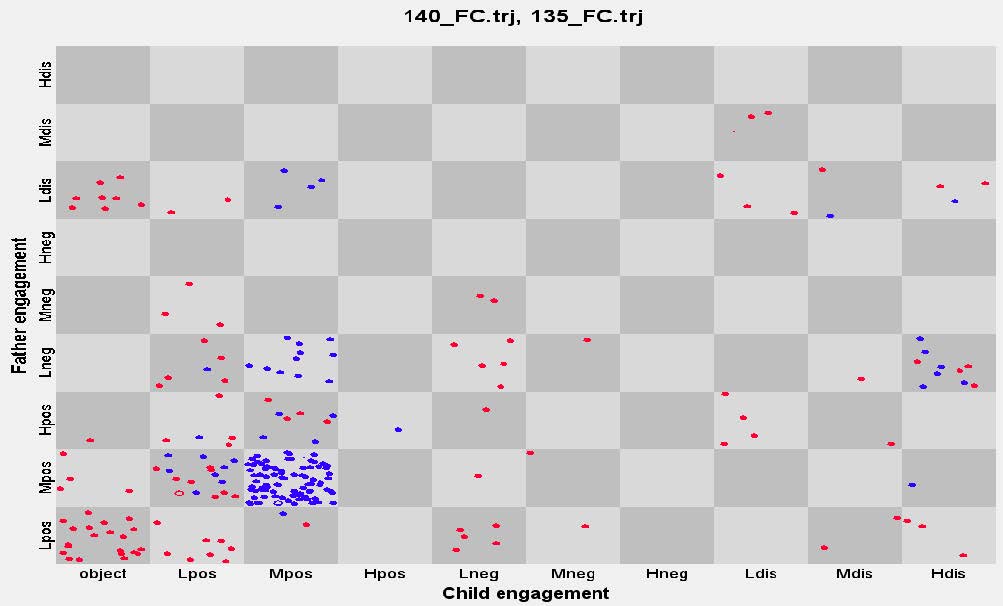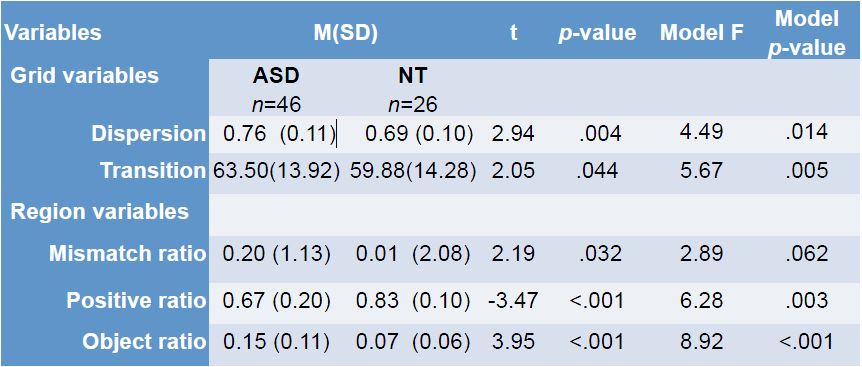Emotion Coregulation in Father Child Dyads
A Dynamic Systems Analysis of Children with and without Autism Spectrum Disorder - A study made with Mangold INTERACT.
Thank you very much to Yuqing Guo 1, Dana Rose Garfin 2, Agnes Ly 3, Wendy Goldberg 2 from the following institutions: 1 University of California Irvine, Sue & Bill Gross School of Nursing, 2 Department of Psychology and Social Behavior & 3 University of Delaware, Department of Psychological and Brain Sciences
Objective

Emotion regulation abilities facilitate the development of emotional functioning and long-term adaptive skills (Gross, 1998, 2007).
Emotional dysregulation, while not a core deficit of ASD, is requently observed among children with ASD and contributes to problems in social interaction.
Methods
Participants
- 72 Father-child dyads: 46 ASD dyads (70% boys) and 26 NT dyads (65% boys)
- Child age: MASD= 5.27, SD=1.42; MNT= 4.32, SD=1.12
- Ethnicity: ASD- 43% European American,
15% Asian American, 24% Hispanic/Latino,
17% multiethnic/other
NT- 46% European American, 23% Asian
Measures
- ADOS-2 (Lord, Rutter, DiLavore, & Risi, 2001) used to confirm ASD diagnosis.
- Social Communication Questionnaire (SCQ;
Rutter, Baile, & Lord, 2003) indicated symptom severity. - Vineland Adaptive Behavior Scales (VABS-II
Sparrow, Cicchetti, & Balla, 2005) completed by parents regarding child’s adaptive and
maladaptive behaviors.
- Fathers and their children were videotaped in their homes during the Three Boxes procedure (Vandell, 1979).
- Emotion engagement coding scheme was
developed to evaluate dyadic interaction in 5s intervals using Mangold International’s
INTERACT 9.47 software. Inter-coder reliability was > k=.80. - The emotional structure of coregulation was indicated by dispersion, transition, and grid duration per visit, which were derived from the State Space Grid (SSG).
- The emotional content of coregulation was indicated by 5 regions marked in the SSG in terms of region ratios (region duration/total duration) in the Three Boxes procedure (see Figure 1).
Results

Figure 1. Five Regions in State Space Grid
Mutual Positive: both father and child in any positive engagement state
Mutual Negative: father and child both in a negative or disengagement state
Child Positive/Father Negative: child in one of the three positive states and father in either a negative or disengaged engagement state
Child Negative/Father Positive: child in a negative or disengaged engagement state and father in a positive state
Child Object: child fixated on a play object; father in any engagement state

Figure 2. Comparison of Emotion Coregulation
between ASD Dyads and NT Dyads
L: Low; M: Moderate; H: High
Pos: Positive engagement; Neg: Negative engagement; Dis: Disengagement
Lpos: low positive; Mpos: moderate positive; Hpos: high positive
Lneg: low negative; Mneg: moderate negative; Hneg: high negative
Ldis: low disengagement; Mdis: moderate disengagement; Hdis: high disengagement
Red = a trajectory of ASD dyads;
Blue = a trajectory of NT dyads.
Comparison of ASD and NT Children on Key Space State Grid Variables (N = 72)
Multiple Regression Analyses Controlling for Child Age

Next, a series of multiple regression analyses (one for each father-child SSG variable) tested the relationship between SSG variables and Vineland adaptive behaviors. Father-child SSG variables, ASD diagnosis, and child age were all entered into each SSG model simultaneously.
More adaptive behaviors were associated with lower “mismatch” of child negative/father positive ratio, b= -140.16, p=.022, lower mutual negative ratio, b= -118.31, p=.001, higher mutual positive ratio, b= 21.26, p=.001, and longer grid duration per visit, b=1.53, p=.025. In all models, ASD diagnosis was significant (ps <.001) such that ASD was lower than NT on adaptive behaviors.
Conclusions
Compared to NT dyads, ASD father-child dyads in this study showed:
- Structure of coregulation
o Wider range of emotional repertoire (dispersion)
o More switches between positive and negative emotional states (transition) - Content of coregulation
o More mismatched states (child negative/ father positive)
o More object-focused states
o Shorter mutual positive states - ASD children had lower reported adaptive behaviors than NT children.
- Higher adaptive behaviors were associated with:
o Higher grid duration per visit (overall degree of “stickiness” of dyadic emotion)
o Higher mutual positive states
o Lower mutual negative states
Implications
- Findings provide insight into moment-tomoment emotion regulation processes in the structure and content of father-child interactions of children with ASD and NT children.
- Findings suggest that the dyads’ ability to remain positively engaged and reduce the time in mutual negative or mismatched ngagement states would promote adaptive behaviors in children.
- The relationship between the overall degree of “stickiness” of dyadic behavior and adaptive behavior needs further study.
Acknowledgements
We would like to express our gratitude to the University of California, Irvine Multidisciplinary Design Program and Undergraduate Research Opportunities Program that provided the financial support that made this research possible.
